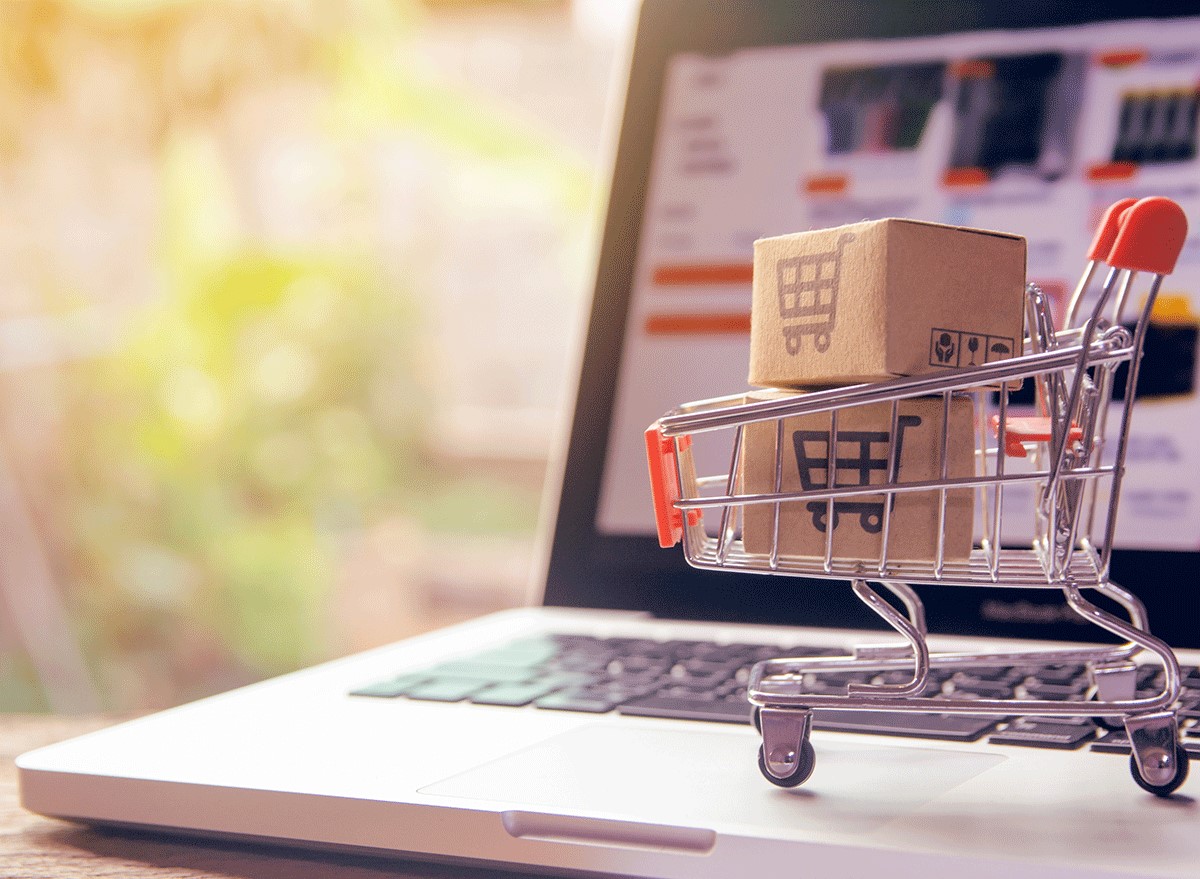Cybersecurity Tips for Online Shopping

Here are Some Cybersecurity Tips for Online Shopping
In today’s digital age, online shopping is very popular. However, with the rise in online transactions, it’s important to stay vigilant and take necessary precautions to ensure a smart and safe online shopping experience.
Useful Tips For Smart And Safe Online Shopping
This article provides essential tips and guidelines to help you navigate the online marketplace securely, protecting your personal information, avoiding scams, and making informed purchasing decisions. Whether you are a seasoned online shopper or new to the digital marketplace, these tips will empower you to shop confidently and make the most out of your online shopping experiences. Shop with confidence and stay safe in the digital world.
1. Introduction to Smart and Safe Online Shopping
Understanding the Benefits and Risks of Online Shopping
Online shopping has become a modern-day convenience that allows us to shop from the comfort of our own homes (or let’s be honest, in our pajamas). But with great convenience comes great responsibility. It’s essential to be aware of both the benefits and risks of online shopping to make smart and safe choices.
On the benefits side, online shopping offers a vast selection of products, competitive prices, and the opportunity to compare options before making a purchase. Plus, those long checkout lines? Say goodbye to them forever. But on the flip side, there are risks to consider, such as the potential for fraud, compromised personal information, or receiving counterfeit or low-quality products.
In this article, we’ll explore some useful tips to help you shop smart and stay safe while enjoying the perks of online shopping.

2. Choosing Secure and Trusted Online Platforms
Researching and Selecting Reputable E-commerce Websites
Picture this: You find a fantastic deal on a website you’ve never heard of before, but something just doesn’t feel right. Trust those instincts! When it comes to online shopping, it’s crucial to research and select reputable e-commerce websites to avoid unpleasant surprises.
Look for well-known websites with established reputations and positive customer reviews. A quick internet search can give you valuable insights into the website’s credibility and customer experiences. If you’re venturing into unfamiliar territory, make sure the website has secure payment options and a legitimate SSL certificate to protect your data during transactions.
Identifying Secure Payment Gateways
When it’s time to whip out that credit card and make a purchase, pay attention to the payment gateway used by the online store. Secure payment gateways, such as PayPal or reputable third-party processors, add an extra layer of protection between your payment information and potential fraudsters.
A trustworthy payment gateway will encrypt your payment details, ensuring they remain confidential. Look for secure symbols, such as a padlock icon, in the website’s address bar, indicating that your information is being transmitted securely.
3. Safeguarding Personal Information and Payment Details
Creating Strong and Unique Passwords
We all know the struggle of remembering multiple passwords, but it’s worth the effort when it comes to online shopping. Create strong and unique passwords for yours.
Avoid obvious choices like “123456” or “password” (seriously, folks, we can do better). Instead, go for a combination of uppercase and lowercase letters, numbers, and symbols. And remember, no using your dog’s name followed by their birth year; that’s just asking for trouble.
Using Two-Factor Authentication for Added Security
Do you know what’s cooler than one lock? Two locks! Enable two-factor authentication (2FA) whenever possible to give your online shopping accounts an extra layer of security.
2FA adds a step to the login process, usually involving a unique code sent to your mobile device. So even if someone manages to get hold of your password, they’ll still need that second code to gain access. It’s like a secret handshake only you and your phone know.
Protecting Payment Card Information
When it comes to entering your payment card information online, proceed with caution. Only provide your card details on secure websites with reputable payment gateways. Look for the padlock icon in the address bar and “https” in the URL, indicating an encrypted connection.
Avoid saving payment information on multiple online platforms, especially if they’re not well-known or trusted. Always keep an eye on your card statements, so any suspicious activity can be detected and reported promptly.

4. Verifying Online Retailers and Sellers
Checking for Company Information and Contact Details
Before clicking that “Buy Now” button, take a moment to verify the credibility of online retailers and sellers. Look for company information, such as a physical address, customer service contact details, and any certifications or affiliations.
Legitimate online retailers and sellers will provide transparent and readily available information. If there’s a lack of contact details or it feels like you’re playing a game of hide-and-seek, consider it a red flag and proceed with caution (or better yet, don’t proceed at all).
Reading Customer Reviews and Feedback
Take the time to read other shoppers’ experiences with the retailer or seller you’re considering. Look for patterns or recurring issues that could be potential deal-breakers.
Remember, not all reviews are created equal, so use your discernment. If a product has an overwhelmingly positive or negative consensus, it’s probably a good indicator of what you can expect.
With these tips in your shopping arsenal, you’re well-equipped to navigate the vast online shopping world with savvy and safety. Happy shopping, and may all your packages arrive swiftly and in one piece!
5. Evaluating Product Reviews and Ratings
Understanding the Importance of Genuine Reviews
Product reviews and ratings can be invaluable when making purchasing decisions online. After all, who wants to waste their hard-earned money on a low-quality product? Genuine reviews from real customers can provide valuable insights into a product’s pros and cons, helping you make an informed choice.
Identifying Suspicious or Fake Reviews
Unfortunately, the world of online shopping is not immune to fake reviews. Some shady sellers resort to creating fake accounts or hiring people to write positive reviews for their products. So how can you spot these imposters? Look out for overly positive or overly negative reviews, generic language, or an unusually high number of reviews posted within a short period. If something seems fishy, trust your instincts and consider seeking reviews from other sources to get a more accurate picture.

6. Recognizing and Avoiding Online Scams
Phishing Attempts and Suspicious Links
Ah, phishing attempts – the modern-day equivalent of someone trying to sell you a bridge. Be cautious of emails or messages that appear to be from reputable companies asking for your personal information. Don’t click on suspicious links, and always double-check the URL of the website you’re on. If in doubt, go directly to the retailer’s official website to make your purchase.
Avoiding Fake Deals
We all love a good bargain, but sometimes a deal is just too good to be true. If you stumble upon a discount that seems unbelievably steep, proceed with caution. Scammers often lure innocent shoppers with enticing deals to trick them into sharing personal information or making payments for non-existent products. Remember, a healthy dose of skepticism can save you from falling victim to these online tricksters.
7. Monitoring and Protecting Against Identity Theft
Regularly Monitoring Bank and Credit Card Statements
Regularly monitor your bank and credit card statements for any suspicious activity or unauthorized charges. By catching any signs of identity theft early on, you can take swift action to protect yourself.
Using Identity Theft Protection Services
If you want an extra layer of protection, consider enlisting the help of identity theft protection services. These services can help safeguard your personal information and provide assistance if your identity is compromised. It’s like having a personal bodyguard for your online shopping adventures.
8. Final Tips for Smart and Safe Online Shopping
Final Thoughts and Recap of Key Safety Measures
Online shopping can be a fantastic way to find great deals and get the products you need without leaving the comfort of your home. But it’s important to be a savvy shopper and take precautions to ensure your safety. Remember, genuine reviews are your friends, always be on the lookout for scams, monitor your financial statements, and consider additional protection services. By following these tips, you can navigate the online shopping world with confidence and peace of mind. Happy shopping!
9. Conclusion
By following these smart and safe online shopping tips, you can protect yourself from potential risks and enjoy a worry-free shopping experience. Remember to choose trusted platforms, safeguard your personal information and payment details, verify online retailers and sellers, evaluate product reviews, and be cautious of online scams. Regularly monitor your accounts and take steps to protect against identity theft. With these precautions in mind, you can confidently shop online and make the most of the convenience and variety that e-commerce offers. Happy and secure shopping!

FAQ
Q: How can I determine if an online platform is secure and trusted?
A: One way to determine the trustworthiness of an online platform is by researching its reputation. Look for well-established and reputable e-commerce websites that have a track record of secure transactions. Check for security indicators such as HTTPS in the website URL, padlock symbols, and secure payment gateways.
Q: What steps can I take to protect my personal information and payment details?
A: To protect your personal information and payment details, always create strong and unique passwords for your online accounts. Enable two-factor authentication whenever possible. Be cautious while sharing sensitive information and only provide it on secure websites. Additionally, ensure that you are using secure payment methods and avoid saving payment card information on multiple platforms.
Q: How can I verify the credibility of an online retailer or seller?
A: It’s important to verify the credibility of online retailers and sellers before making a purchase. Look for clear and accurate company information, such as a physical address and contact details. Check for customer reviews and feedback to get insights into their reputation and reliability.
Q: What should I do if I suspect an online scam or encounter suspicious links?
A: If you suspect an online scam or encounter suspicious links, it’s best to err on the side of caution. Avoid clicking on suspicious links emails or messages. Report any suspected scams to the appropriate authorities and your bank or credit card company if you have shared any sensitive information. Stay vigilant and trust your instincts when something seems too good to be true.
Thank you for reading 🙂










